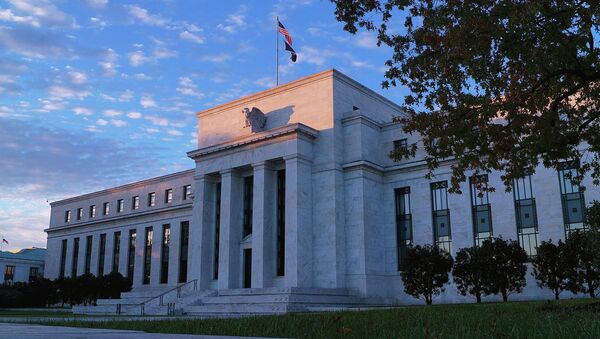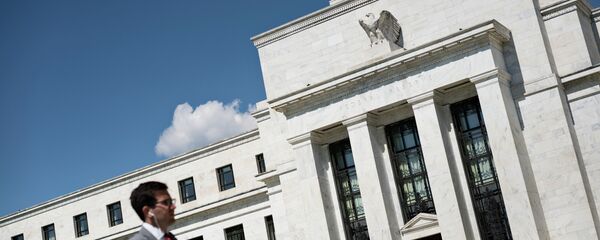Kristian Rouz – Minutes from the Federal Open Market Committee (FOMC), released Wednesday, have not only indicated a substantial dissent on the decision-making board regarding raising the rates or keeping them steady, but also underlined the systemic risks that either option entails.
Fed officials expressed their concern over the level of the US business indebtedness, with the non-financial business debt to GDP ratio having advanced to its highest since the recession-marred year 2009. Currently at 0.717, the ratio stood at a comparable level in the midst of the 2008-2009 recession, hitting its peak at almost 0.750, sharply plunging thereafter to about 0.650 by late 2010.
Such dynamics occur because periods of economic contraction are typically characterized by declines in business activity and revenues, whilst the businesses’ financial obligations remain in place. Subsequently, many businesses end up over-leveraged, resulting in higher yield on their obligations, and making it harder for them to do business, thus unraveling the vicious circle of losses, or contractionary spiral.
“A few participants expressed concern that the protracted period of very low interest rates might be encouraging excessive borrowing and increased leverage in the nonfinancial corporate sector,” FOMC minutes released Wednesday read. “Finally, one participant expressed the view that prolonged periods of low interest rates could encourage pension funds, endowments, and investors with fixed future payout obligations to save more, depressing economic growth and adding to downward pressure on the neutral real interest rate.”
The Fed’s main concern is that a sudden hike in rates amidst the low inflation and sluggish 1-percent-year-on-year growth after almost 7 years of recovery might result in the economy sliding into a recession. However, keeping rates current-low entails the same outcome.
The “credit-to-GDP gap”, as defined and scrutinized in one of the Fed’s recent studies, is a “vulnerability”, the regulator admits. When the ratio is high, unemployment tends to increase, typically coinciding with contractionary dynamics in the broader economy regardless of the level of the actual interest rates. However, natural interest rates go down in such a situation as the value of governmental bonds grows when private bonds yields advance. Subsequently, the Fed are facing a perspective of forced introduction of zero or negative interest rates policy (ZIRP/NIRP).
“(S)hocks to (our risk appetite measure) lead to recessions if the credit-to-GDP gap is above average,” the Fed study reads. “Policy effectiveness is reduced when the credit-to-GDP gap is high. These results suggest that the credit gap affects monetary policy transmission channels in high credit states.”
Amid the policy efficiency and credibility debate underway, these findings provide further explanation to the Fed’s passive stance on policy – neither of their options would change anything without a systemic approach to the long-overdue economic reform. The ballooning debt cloud that formed during the years of the post-recession recovery is hampering further economic growth, and renders the demand-side economics, the currently dominating economic doctrine in Washington, irrelevant.



